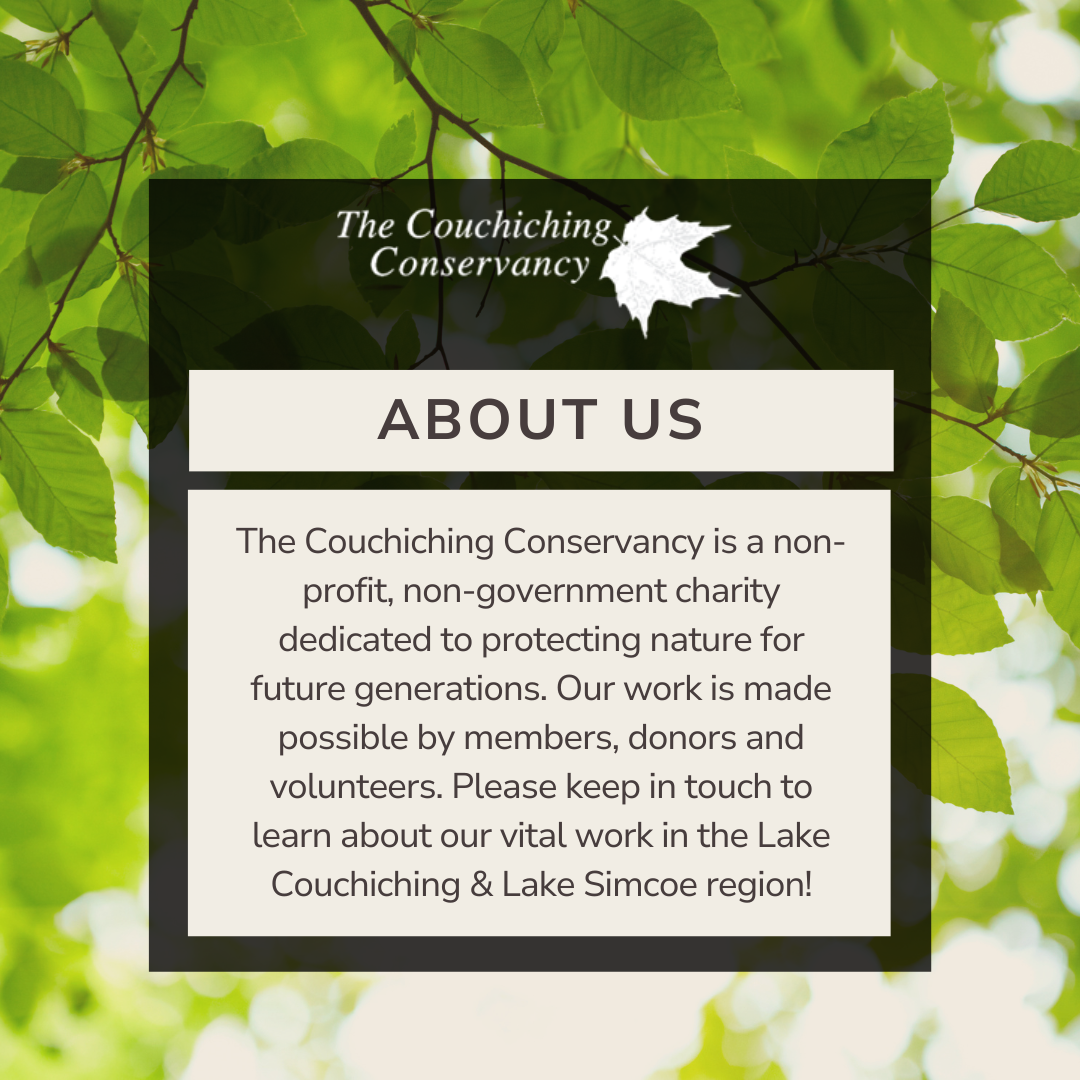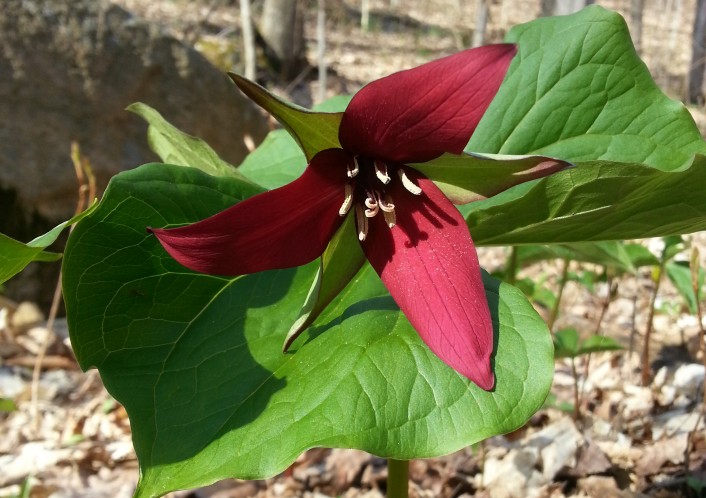Anyone who has visited a forested area in the spring in our area is familiar with Ontario’s floral emblem, the white trillium.
 The adoption of an official flower for Ontario in 1937 grew out of a movement during the First World War to choose a national floral emblem appropriate for planting on the graves of Canadian servicemen overseas. Although it was well received, no national flower was ever chosen, but the white trillium was chosen as Ontario’s floral emblem.
The adoption of an official flower for Ontario in 1937 grew out of a movement during the First World War to choose a national floral emblem appropriate for planting on the graves of Canadian servicemen overseas. Although it was well received, no national flower was ever chosen, but the white trillium was chosen as Ontario’s floral emblem.
There are four species of trilliums growing in our area; white trilliums, red trillium, which are both widespread, while the painted trillium and nodding trillium are both rare and uncommon.
White trilliums bloom in early spring in forested areas before the trees above them leaf out and block the sunlight. Spring forest flowers take advantage of the time between the thawing of the soil and the unfurling of tree leaves when the forest floor is warm enabling the flowers to grow very rapidly.
But this time is limited and requires great amounts of energy from the plants. It may take seven years from the time the seeds sprout until the first flower is produced. Because the window of spring sunlight is so short, the plant actually forms the flower in a tightly packed bundle at the tip of its root the year before it blooms.
Because they are sheltered by trees, trilliums must rely on insects rather than wind for pollination. The broad, spreading petals provide a large landing base for a variety of insects to land and pollinate the showy flowers.
White trillium flowers bloom for about three weeks and turn pale pink as they age. Once the petals drop off, the seed bundle forms. These seeds have a nutritious handle that ants are attracted to and drag them back to their nests. The ants eat only the outside part, leaving the seeds to sprout. This is a clever and effective way for the trillium plant to spread to a new area.
The red trilliums is also known as wake-robin and stinking Benjamin. The flowers are a deep red-purple and bloom in May, however this trillium tolerates acidic soil and is more common on the Canadian Shield. Red trillium flowers have no nectar but do have a rotting-flesh smell which attracts carrion flies. The flies in turn pollinate the flowers.
Painted trilliums are very site specific; they prefer deep, very acidic soils, and so are found in select areas on the Canadian Shield. The flowers are small and delicate with white petals and a contrasting maroon throat.
Nodding trilliums look very similar to white trilliums except that their flowers are bent at an angle hence their name.
There is a still a common belief that it is illegal in Ontario to pick white trillium flowers because of its status as the province’s emblem. While there is no such law, it is not advisable to pick the flowers because it takes so many years to produce one and the plant may take years to recover from the damage.
UPDATE June 2020: There was an attempt in 2009 to gain protection for our province’s floral emblem, the white trillium. The proposal went to First Reading but stopped there, failing to complete the process to become law. Therefore, white trilliums have no additional protections just because it is our floral emblem.
It’s best to simply take a walk in the woods and take photos of these stunning flowers. And they are at their peak right now, especially at Grant’s Woods on the appropriately-named Trillium Trail. Grant’s Woods is located at 1485 Division Rd. West, just outside of Orillia. Visitors are welcome to visit free of charge however we gratefully accept donations to help with our conservation efforts.
The Couchiching Conservancy is a non-profit, non-government land trust dedicated to protecting nature today, for current and future generations. Our work is powered by community members, supporters, businesses, volunteers and foundations. Since 1993, we have helped protect over 14,000-acres of wilderness – an area double the size of the City of Orillia! We operate on the territory of the Anishnaabeg. Learn how to get involved here.

